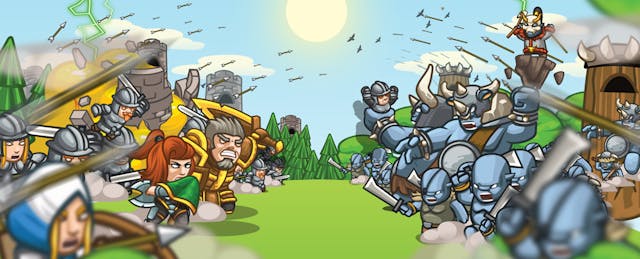When it comes to learning to code, Nick Winters believes it’s not enough to drag, drop and snap blocks together, which many kids do when they use online coding tools including Scratch. They should learn how to write commands—brackets, parentheses, semicolons and all.
So it’s time to to put away the blocks—and bust out the swords. Winters’ company, CodeCombat, offers a swashbuckling game that teaches kids to write code in order to guide their avatars through deadly mazes and battles with hostile ogres. The San Francisco-based team has scored a big victory: raising a $2 million seed round from Third Kind Venture Capital, Andreessen Horowitz and Allen & Company.
CodeCombat currently teaches Python and JavaScript through an adventure game that borrows its design and aesthetics from blockbuster hits like “World of Warcraft” and “Diablo.” There are mazes, traps and menacing monsters that players must code to defeat. Like any game, the levels get harder—and players learn more advanced functions—as they progress. There are also customizable outfits, weapons and powerups that can be earned.
Shana Fisher, Managing Director at Third Kind Venture Capital and a board partner at Andreessen Horowitz, recalls her child was “immediately obsessed and demanded a subscription” after playing the game at a summer coding camp.

The company itself has embarked on its own propitious adventure. The three co-founders—all college friends—shared the first prototype in October 2013 on Reddit. The deluge of traffic soon crashed the servers. The next day, the team was interviewed onstage at the Startup School conference by Y Combinator’s Paul Graham and Sam Altman. As they walked off, they were in for a surprise. “You didn’t realize it but that was your Y Combinator interview,” Graham told the two as they began to walk off the stage. “You’re in the next batch.”
Since then, more than five million people have played the game. The company’s goal, according to Winters, is to create a fun, compelling learning experience without watering down the knowledge and skills required to be proficient at coding. “When you have a game-based learning environment using real code,” he says, “students can program and create things if you believe in them and let them learn formal syntax.”
In recent years, coding companies including Udacity, Bloc and Galvanize have collectively raised hundreds of millions to help (mostly) adults learn programming chops to boost their careers. CodeCombat’s fundraise suggests there is a market opportunity for younger learners as well. Nonprofits like Code.org are teaming up with the tech industry and the government to expand coding education in K-12 schools.
While the web is replete with visual “block” programming tools like Scratch, where users add and rearrange a set to instructions to run a program, Winters believes “the training wheels must eventually come off” for students who truly want to learn how to code. He claims that CodeCombat can work out of the box; teachers do not need prerequisite coding knowledge to implement in their classrooms.
So far, more than 25,000 students in grades 3 through 12 have piloted CodeCombat in their classrooms. This seed round is intended to help the company flesh out the product and expand its footprint in schools. The company charges individual users $10 per month, but will negotiate a better rate for schools and districts depending on their size.
The game has won over some teachers. “Compared to other coding sites where students drag and drop blocks, CodeCombat requires students to write code,” says Jason Whiting, who teaches communications and information technology at Patrick Henry Middle School in South Dakota. So far, more than 600 of his students in grades 6 to 8 have played it, and he feels “they’re getting a more realistic experience with programming.”
One of Winter’s worries—that parents and teachers may frown upon the fighting and combat element of the game—has not materialized, at least for now. Aside from one religious school in Taiwan that expressed concerns, Winters says the “cartoon violence is carefully chosen so that it’s engaging without being excessive.” Whiting hasn’t heard any complaints either as “there’s no gore and guts.”
What Winter did learn, however, was the need to have more diverse avatars. “Unfortunately both the starting heroes in the game right now are white,” he acknowledges. “We want kids to have an opportunity to see characters that look like them.”


